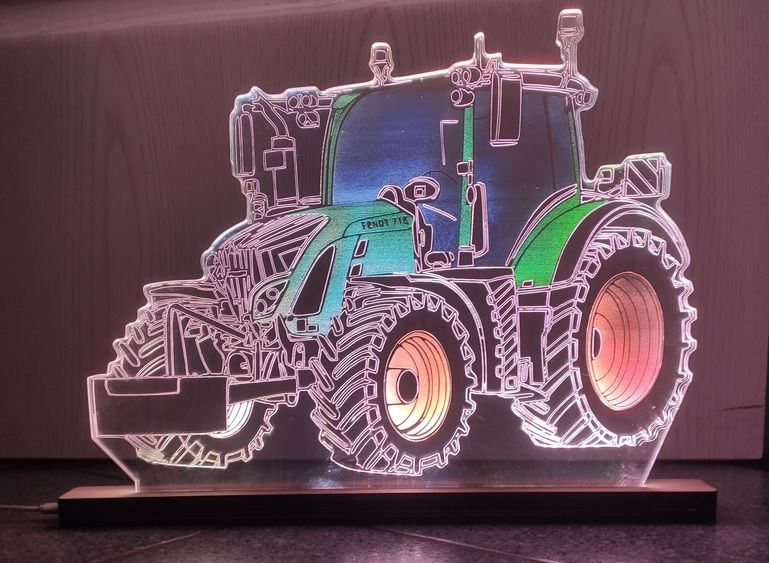Help creating NeoPixel LSD-language
-
@o_lampe said in Help creating NeoPixel LSD-language:
Not sure yet how to program it. Maybe the bootloader is specific for robotics-stuff?
Very nice find. I bookmarked it. For IDE I suggest to check platformio. They support many CPUs and platforms and provide an very functional and auto updatable development environment on top of VSCode.
https://docs.platformio.org/en/latest/platforms/atmelsam.html
-
@zapta
The DFRobot board isn't listed (yet) in PlatformIO. I'm not sure, if it would support the extra flash?
Furthermore, PlatformIO seems to work on Linux systems. That's not my favourite OS, especially when it's text-based. I hate to search the web for every config-line and almost have to beg for read/write permissions as normal user. -
For those who want to install the DFRobot firebeetle M0 files for Arduino IDE:
don't use the link provided in their Wiki!
Instead use this link
http://download.dfrobot.top/firebeetle/package_DFRobot_test_index.jsonThen open the boardmanager as usual and search for dfrobot. You will see several firebeetle packages, choose the M0 and your ready

-
LOL, all the example files have comments in chinese

I knew I'd have to learn it one day...There are many examples for fastLED- library, all about WS2812B strips

-
@o_lampe, platformio runs seamlessly on all three major platforms, and you can open the same project on each one of them with no modification.
As for DFRobot, a platform io library search suggests support https://platformio.org/lib/search?query=dfrobot
Also, you can add it yourself as described here or in your project tree. https://community.platformio.org/t/how-to-include-arduino-library-in-platformio/15146
Learning platformio is a great investment. Once you set it up (e.g. on VSCode), you would not go back to the Arduino IDE. I used it on Arduinos, Teensys and Pico. For the Pico for example, it support hardware debugging with another Pico acting as the debugger. There is also a great community around it.
My 2c.

-
@o_lampe said in Help creating NeoPixel LSD-language:
Yes, I've seen that too and there is a "NeoPXL8 friend" for it, that allows us to control up to 8 strips w 250 LEDs each!
I haven't digged deeper into this, if it would coop with Duet/gcode.
Very promising indeed...I received the NeoPXL8 friend and it's the most overpriced gadget I bought so far.
It comes with a HCT245 8-bit transceiver which works as level shifter. No further brain, as far as I can see. -
It's time for Neo Pixels to come out of the box with 3.3V compatible inputs.
-
@zapta
Some people use it with 3.3V, but they had to lower V+ too. (less brightness). I had no success with it, because I didn't have a good 3.3V external power supply. -
You can convert a 3.3V logic signal to 5V using just a 2N7000 and a pullup resistor:
Connect the gate to 3.3V power, source to the 3.3V signal and drain is the 5V logic output; add a resistor from that to 5V power to give the "high" level, eg. anything from 2.2K to 10K.
-
@o_lampe Hi, I am wondering if your primary mentioning of a "descriptive language" to control NeoPixels/Dotstar has seen any progress? I am currently adding some stripes to my machine and finally have decided to use an arduino to do the work of controlling the stripe colors and link the arduino via serial comm to a client app (for the time being, I test all stuff with the PC, but there is no problem to attach that small arduino to the Duet3 SBC (Raspberry 3+).
So far, what is that LSD doing

-
@hlwerschner
Not much I'm afraid. I wanted to engrave some acrylic strips and animate them with NeoPixels. But i got so distracted by commissioning and upgrading the new Co2 laser, that I almost forgot, why I bought it
In the meantime, I stumbled across a four color LED strip, which looks quite nice, too.
Now I'm trying to figure out, if designing a 4-fold NeoPixel LED strip would be possible. So I'm looking into the smallest possible footprint of programable LEDs.

I should mention, that this isn't my work. I found it on a discord channel about the K40-laser from the member @raineroe